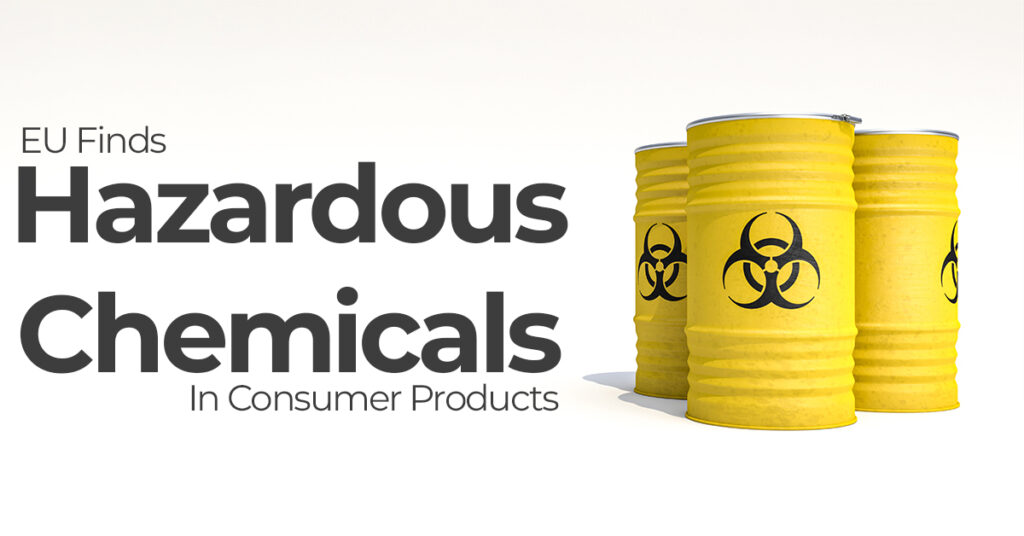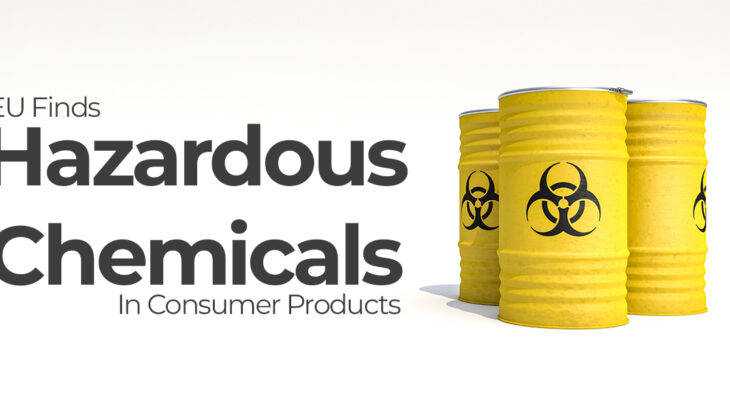
The European Chemicals Agency (ECHA) has recently published a comprehensive report shedding light on hazardous chemicals detected in a range of consumer products. This revelation brings attention to the potential risks posed by everyday items and emphasizes the importance of consumer awareness and regulatory measures. This blog post explores the key findings of the ECHA report, identifying the types of chemicals that potentially affect health and the environment.
Detection Of Hazardous Chemicals In Products:
ECHA discovered higher concentrations of potentially hazardous substances, including phthalates and lead, in items that are sold to customers. It was found that around 18% of the examined products violated the regulations established by the European Union.
On December 13, 2023, in Helsinki, national regulatory bodies across 26 European Union nations scrutinized over 2,400 products primarily designed for consumers. They identified over 400 items that contravened the chemical laws of the EU.
The EU-wide enforcement examined if various categories of goods distributed to customers and professional practitioners within the European Economic Area (EEA) market adhered to the regulations outlined in the European Union chemicals legislation. This initiative encompassed evaluations of adherence to REACH compliance, REACH obligations on substances in articles, and limitations on persistent organic pollutants (POPs), which either prohibit or constrain the utilization of POPs in chemical products and articles. Additionally, it addressed limitations derived from the Toys Directive and the Directive on the Restriction of Hazardous Substances (RoHS).
Common Products That Breached ECHA Enforcement Law:
The most frequent violations of laws were observed in various categories of products:
- Electronic gadgets like chargers, toys, headphones, and cables. Of these items, 52% were identified as non-compliant, primarily attributable to phthalates in soft plastic components, lead in solders, or cadmium in circuit boards.
- Sporting gear, including bicycle gloves, yoga mats, rubber handles on sports equipment, and balls. Of these products, 18% were deemed non-compliant, mainly due to SCCPs, PAH in rubber, and phthalates in soft plastic.
- Play things encompassing dolls, bathing/aquatic toys, costumes, plastic figures, play mats, outdoor toys, fidget toys, childcare articles, and slime. Non-electric toys accounted for 16% of non-compliance, primarily associated with the presence of phthalates in soft plastic parts. Additionally, other restricted substances such as PAHs, nickel, boron, or nitrosamines were identified.
- Fashion items like jewelry, bags, belts, clothing, and shoes. Of these products, 15% were non-compliant due to lead, cadmium, and phthalates within them.
Inspectors have implemented enforcement measures when discovering products that do not comply, leading to the majority being removed from the market. Non-compliance was more prevalent in products from the regions that are not within the European Economic Area (EEA) or origins that are unknown.
The ECHA’s report on hazardous chemicals detected in various consumer products serves as a wake-up call for consumers, manufacturers, and regulatory bodies alike. Identifying these substances prompts the need for more stringent regulations, increased transparency, and a collective effort to transition towards safer alternatives. Ultimately, consumer awareness and demand for safer products are crucial in driving positive change. As we navigate the complexities of modern living, partner with Sunstream to adhere to various regulations such as REACH, conflict mineral compliance, and SDS by staying informed and advocating for safer, environmentally friendly supplier, distributor, or manufacturer.




 +1.585.935.7123
+1.585.935.7123 +91-804-148-6861
+91-804-148-6861